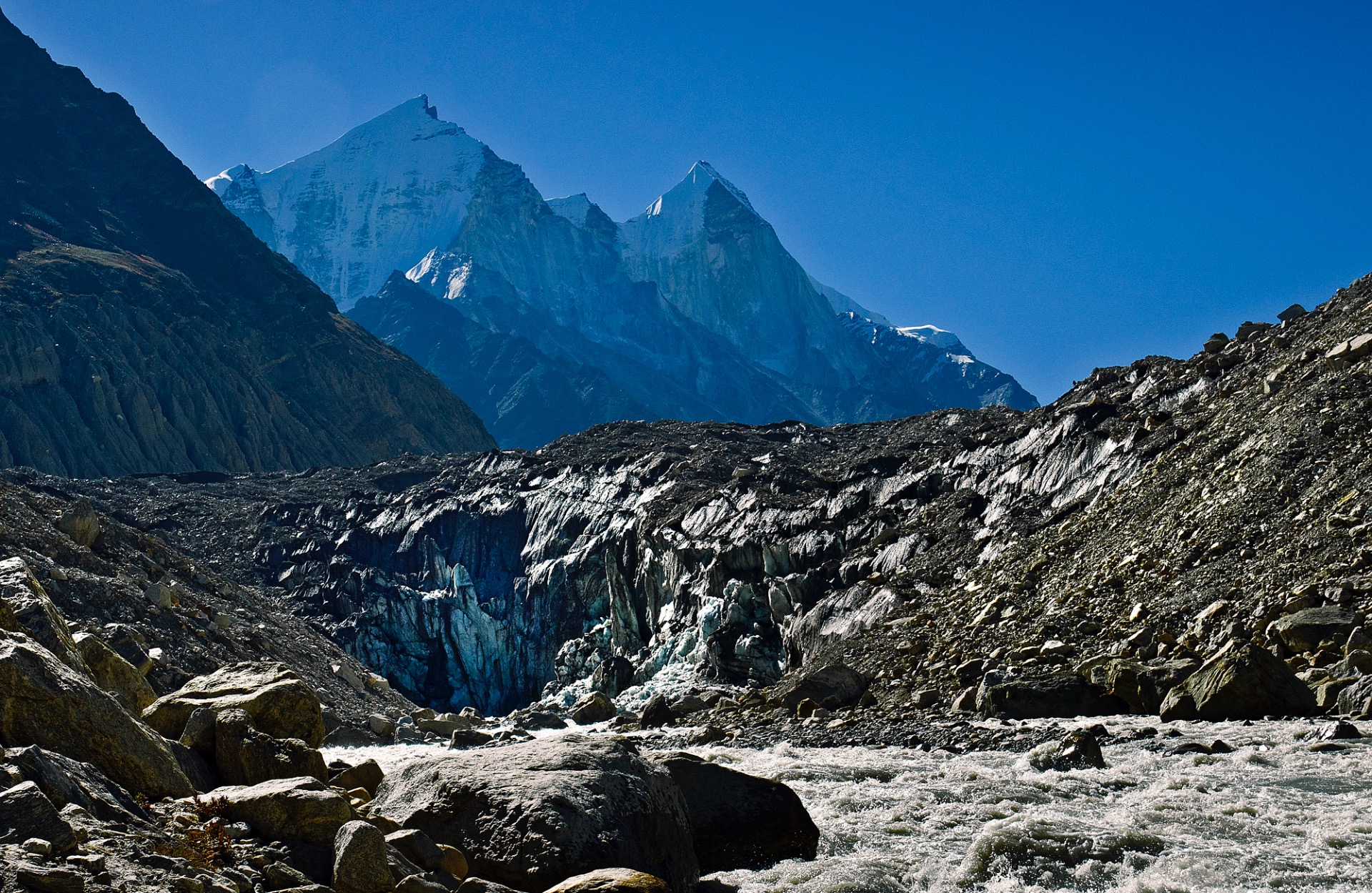THE PILGRIMAGE
Galleri Sinne, Helsinki, Finland 7.12. - 22.12.2007
Materials: Text, Seven shells from the river bank of Varanasi, Black stone with an "X" from the river bank of Gangotri, Holy water from Ma Ganga.
I stayed at the Global Arts Village artist residency in New Delhi for three months in 2007 (February-April). I had an urge to experience The Divine Himalayas. In May 2007 I made a pilgrimage along The Holy River Ganges, starting from Varanasi in the hot plains of Uttar Pradesh, heading up to Gangotri and the Gomukh; the source of the river Ganges (4,023m). Gangotri is habited only in summertime, at an altitude of 3,415m the village is covered with snow during winter.
"Glacier retreat, melt, and ablation, result from increasing temperature, evaporation, and wind scouring. Ablation is a natural and seasonal part of glacier life. As long as snow accumulation equals or is greater than melt and ablation, glacier health is maintained. Over the past 60 to 100 years, glaciers worldwide have tended toward retreat." (https://nsidc.org/glaciers/story/retreat.html)
What happens if the waters of Ma Ganga stop running?

The Pilgrimage
The boy pushed a blackened skull back into the fire with a stick. The fire was built of wood and human bones. It was early morning on the riverbank, and a cremation funeral had just begun. The mourning family, dressed in white. The deceased wrapped in an orange cloth. The fire burned rapidly with high flames. In the background the holy river, Ma Ganga, moved gently towards the sea in the Indian morning breeze.
Every Hindu has a wish to become cremated at the bank of Ma Ganga in Varanasi. It is the only place on earth where the human soul has a chance to reach eternal peace at once. It is not for sure, though, it all depends on the karma of the soul, but it is always worth trying, the Hindus seem to think. There are fires burning around the clock on the riverbank of Varanasi. Souls are put on their journeys to the timeless land of peace, to Moksha.
I had started my pilgrimage along the Ganges from the holiest city in India, Varanasi, or Benares as the Hindus call their beloved city of temples and learning. My destination was the temple of Gangotri and the Gomukh glacier in the Himalayas, the very source of Ma Ganga, the holiest river in India. I sat on the steps of the gaths looking at the fire, the skull falling off the burning human bones, the boy pushing the skull back into the fire, the mourning people, the hound dogs, the cows, the piles of ashes at the riverbank, and the waters running by. In the early morning light it all seemed so beautiful, so in balance. Although I knew the waters were polluted and the dogs were waiting for their barbecued meal.
Later that day we walked on a sandy riverbank where a few months later would be rushing waters. It was springtime, the time before the monsuun and the water in the river was very low. Fine grains of warm sand played with my toes. I had my Indian dress on and my big orange scarf wrapped around me, and I walked barefoot in the holy sand of Ma Ganga. Small shells appeared in front of me and I picked some for fun. Some holy shells from the holy riverbank as souvenirs, I thought smiling.
We reached Gangotri in the evening. As usual men from the hostels met us at the bus stop and everybody wanted us as their guests and everybody spoke at once, and we just stayed cool and gave our luggage to the one whose face and appearance was appealing us the most, and off we went to our hostel in the last village along the Ganges. The next morning we sat on the stones of the riverbank, as the water in the river was low, and imagined how high above our heads the waters would run in the autumn. I found a small, black stone with a figure like an "X" written on it. Like Lord Shiva would have been there and written a mark on the stone for me: "Shiva was here". I picked it up and put it in my pocket. I had found my holiest treasure of all at the very bottom of Ma Ganga. The next day we headed for Gomukh.
The Gomukh glacier is 19 km uphill from Gangotri. We walked along a narrow path, one side facing downhill to the river and the other side facing the mountain wall. Every now and then people came by, walking or riding on small mountain horses: Hari Om! We smiled and greeted them back: Hari Om! (Hari represents Vishnu, and all things holy and pure, Om is the primordial sound of the Universe; the holiest and purest wibes ever are Om.) We had almonds, cashew nuts, and dried fruit for lunch as we sat on a big stone facing the Gomukh. The huge glacier wall was there, a hundred meters away from us, we could hear it, despite of the sound from the running waters. The ice was breaking. We were told not to go too near the glacier. A few days before we came, a man had died of a falling block of ice.
I washed my face in the freezing, fast running water. My fingers started to ache after a few seconds. I wondered how people managed to take their holy dip in this all too fast running, all too deep freezing bath. The waters were pushing out underneath the ice with such force that it seemed unreal. We filled our small bottles with the holiest water of all waters, and drank some, before we left downhill.
The wild roses of the mountains had started to blossom.